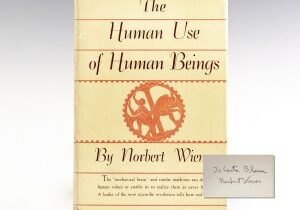Saturday July 20th marks the centenary of the birth of Sir Edmund Hillary, the first climber to reach the summit of Mount Everest.
Born in Auckland, New Zealand on July 20th 1919, Edmund Percival Hillary made his first climb at the age of twenty, reaching the summit of Mount Olliver in the Canterbury Region of New Zealand. Hillary first encountered Everest, the summit of which he would become the first man to conquer, as part of the 1951 British Mount Everest reconnaissance expedition led by English Himalayan mountaineer Eric Shipton. The expedition reconnoitred various possible routes for climbing Mount Everest from Nepal concluding that the one via the Khumbu Icefall, Western Cwm and South Col was the only feasible choice.

Large signed black and white photograph of Edmund Hillary
In 1952, Hillary was invited by the Joint Himalayan Committee to join the 1953 British Everest expedition led by British Army officer John Hunt. Hunt named two two-man teams to make the final ascent to the summit and placed Hillary with Nepali-Indian Sherpa mountaineer Tenzing Norgay who had participated as a high-altitude porter in three official British attempts to climb Everest from the northern Tibetan side in the 1930s. The entire expedition team totaled over 400 people, including 362 porters, 20 Sherpa guides, and 10,000 pounds of baggage.

The party at the foot of the Lhotse Face: Plate 30 in the first edition of The Ascent of Everest
The expedition set up base camp in March 1953 and, working slowly, set up its final camp at the South Col at 25,900 feet where snow and wind delayed them for two days. With the help of fellow climbers George Lowe, Alfred Gregory, and Ang Nyima, Tenzing and Hillary pitched a tent at 27,900 feet where they spent the night. Hillary awoke the next morning to find his boots frozen solid outside the tent and, after warming them on the stove for two hours, he and Tenzing attempted the final ascent to the summit.

Frontispiece plate of Tenzing Norgay reaching the summit of Mount Everest; from the first edition of The Ascent of Everest
Tenzing later wrote that Hillary took the first step onto the summit and he followed. They reached Everest’s 29,028 ft summit – the highest point on earth – at 11:30 am on May 29th 1953. The event marked a culminating moment in mountaineering history, and one of the great achievements of human stamina and will which garnered worldwide attention. News of the expedition’s success reached London in time to be released on the morning of Queen Elizabeth II’s coronation on June 2nd 1953.

Scarce original program from the Ascent of Everest Gala Premier Lecture; signed by eight members of the Everest epedition
On their return to Britain, Hillary was appointed Knight Commander of the Order of the British Empire and Hunt a Knight Bachelor for the efforts. On September 15th 1953, each member of the successful expedition appeared before the Queen and a large audience at the Royal Festival Hall. The Gala Premier Lecture was held jointly by the R.G.S. and the Alpine Club.

First edition of The Ascent of Everest; inscribed by Sir John Hunt
To satisfy the great demand around the world for the story of the British team’s success, Sir John Hunt soon published an account of the expedition, which he completed in the course of a single month. Published in London by Hodder & Houghton, The Ascent of Everest contained eight color photographic plates, 48 half-tone plates and many in-text illustrations after pen-and-ink sketches. The sixteenth chapter contained Sir Edmund Hillary’s stirring account of the final part of the climb.

First Edition of Conquest of Everest; signed by John Hunt, Edmund Hillary, George Lowe, Charles Evans and James Morris
The account was subsequently published by E.P. Dutton in New York in 1954 under the title The Conquest of Everest. View the many other important books related to Sir Edmund Hillary, Mountaineering, and Polar Exploration currently in our collection.









